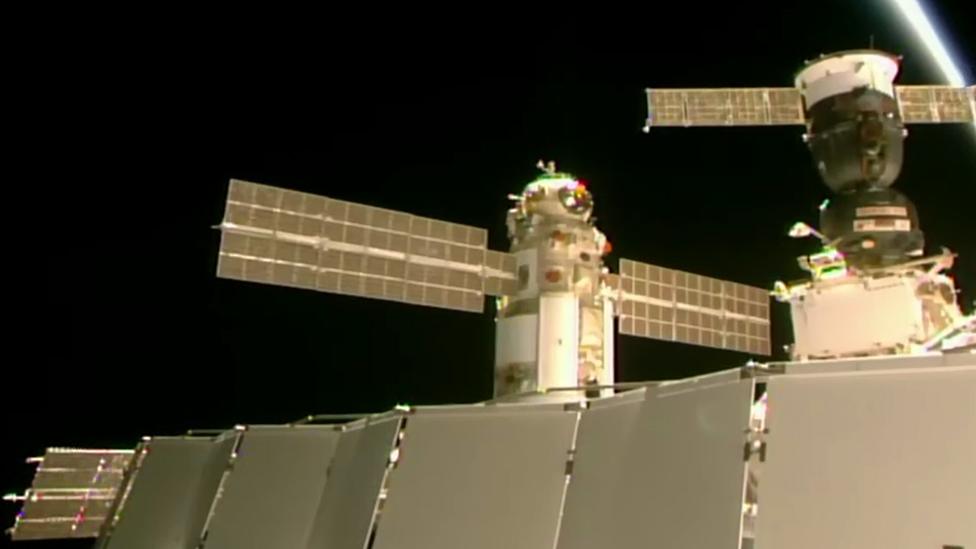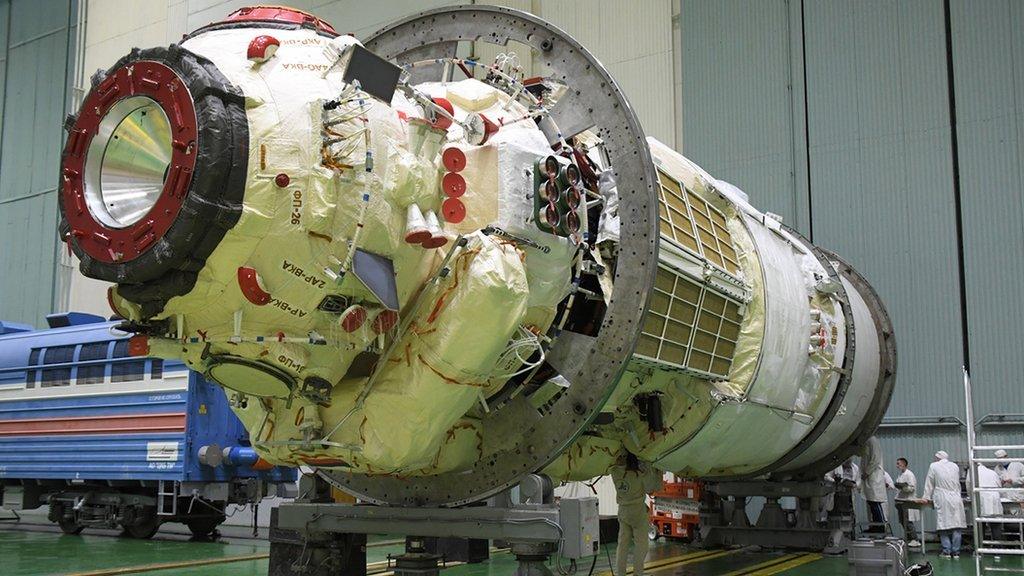Delayed Russian Nauka module joins space station
- Published

Nauka (centre) joined the ISS high above the border between Mongolia and China
Russia's troubled Nauka laboratory has docked with the International Space Station (ISS) after an eight-day flight.
The 13m-long, 20-tonne module was driven into the rear of the orbiting platform, linking up with the other major Russian segments on the ISS.
Nauka should have launched in 2007, but the vessel suffered repeated slips in schedule, in part because of budget difficulties but also because engineers encountered a raft of technical problems during development.
Even after it launched from the Baikonur Cosmodrome in Kazakhstan a week ago, it experienced propulsion issues that required workarounds from controllers in Moscow.
In the end, however, it made its docking with the station on the planned date.
Allow X content?
This article contains content provided by X. We ask for your permission before anything is loaded, as they may be using cookies and other technologies. You may want to read X’s cookie policy, external and privacy policy, external before accepting. To view this content choose ‘accept and continue’.
Autonomous systems brought the module into close proximity before cosmonaut Oleg Novitsky took over manual control from inside the ISS for the last few metres of approach.
"There is contact!!!" Russian space agency Roscosmos chief, Dmitry Rogozin, said on Twitter.
Connection was confirmed at 13:29 GMT, 16:29 Moscow time, when Nauka and the ISS were flying over the border between Mongolia and China at an altitude of 420km (260 miles).
The new module will result in a significant boost in habitable volume for the ISS, raising it by 70 cubic metres.
Cosmonauts will use the extra space to conduct experiments and to store cargo. They'll also use it as a rest area, and it has another toilet for crew to use on the station.

The delay for Nauka has also affected the European robotic arm
In addition, the module carries with it a large robotic arm (ERA) supplied by the European Space Agency (Esa).
This 11m-long device will be able to operate all around the Russian end of the ISS. With the aid of an "elbow" joint, it will shift position by moving hand over hand.
The ERA can grapple components of up to eight tonnes in mass with a precision of 5mm. ISS crewmembers will also be able to use the arm to manoeuvre themselves when on a spacewalk.
The last sizeable Russian segment sent to the station was Rassvet. This 6m-long storage unit was lifted into place in 2010 by one of the last US shuttle flights.
Nauka's installation comes just as Russia has been questioning its future role in the ISS project.
Moscow officials recently warned about the more-than-20-year age of some of their on-orbit hardware and intimated the country could pull out of the station in 2025. And Russia has shown little interest in joining the US-led lunar platform, known as the Gateway, which will be assembled later this decade.

Nauka had an extremely difficult development